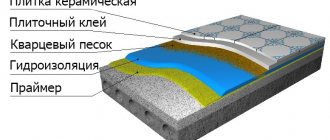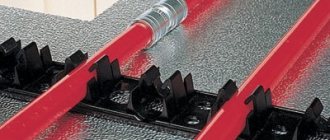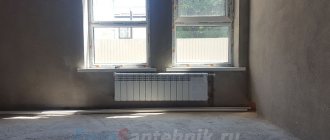Features of a film warm floor
High power consumption has always been a disadvantage of any electric heating. A traditional boiler with batteries connected to it devours a wild amount of electricity, making the meters literally fly up due to the high consumption. And the larger the area of home ownership, the greater the costs.
Heating equipment developers are working hard to reduce energy consumption. For example, in technology, precise electronic thermometers are used, experiments are carried out with a coolant and methods of heating it. Film warm floors have become an interesting and economical solution. Demanding a minimum of labor for their installation, they provide rooms with comfortable warmth.
Infrared heating equipment is considered economical. This is not to say that electricity consumption is reduced in a downright dramatic way, but in general, costs are reduced by 20-40%. Considering the high cost of electric heating, the amount of savings will be significant. It should also be noted that the minimum cost of installing film underfloor heating should be noted. Only now you have to spend money on the film itself.
Let's look at the main features of film warm floors:

The film can heat kitchens, corridors, hallways, children's rooms, bedrooms and any other premises.
- Economical energy consumption - after working on the thermal insulation of your home, it can be reduced by another 10-15% of the original value;
- A large selection of films of various capacities - for work as a main or auxiliary heat source;
- Film warm floors give soft heat, do not burn oxygen and do not have a negative effect on human health;
- Infrared film does not require a powerful screed, which further reduces energy consumption and eliminates inertia.
Suitable options for underfloor heating kits
| RS code | Name | Area, m2 | Specific power, W |
- Attention. The heating cable kits presented in the calculation are required in the amount of 3 pieces!
| RS code | Name | Power, W | Length, m | Minimum laying step, cm | Laying step, cm | Specific power per m2 |
| RS code | Name | Power, W | Area, m2 | Specific power per m2 |
Energy consumption of underfloor heating
The energy consumption of an infrared film underfloor heating is calculated using the simplest formulas. Before installation, it is necessary to decide how the film will be used - as the main source of heating or as an auxiliary source of heat in addition to radiators, batteries and other devices.
If the film heat-insulated floor will act as an addition, you will need a film with a power of 150 W / sq. m. To work in independent mode, its power should be 200-220 W / sq. m. If the room is cold, and even damp, we increase the capacity to 300 sq. m. As a basis for our calculations, we will choose two samples - with a power of 150 and 220 W / sq. m. Let's see how much the warm floor consumes electricity per month, in kilowatts.
First, you should calculate the area of the film warm floors themselves. We are not particularly interested in the area of the room, but the calculations are carried out for rooms with a ceiling height of up to three meters. Usually, the film is not located under the entire area of the premises - under beds, sofas and wardrobes, it is not needed, since here it can be damaged as a result of elementary overheating. Therefore, before making calculations, you need to make a plan and decide where the IR film will lie and how much you need.


The figures presented are valid for round-the-clock operation of film warm floors, but in practice they work in intermittent mode, obeying the thermoregulation system.
Let's assume that the area of our household is 100 square meters. m. Of this hundred, about 20% of the entire area is allocated for furniture. The total area of the infrared film in the house is 80 sq. m. If it is used as the main source of heat, the daily electricity consumption of the underfloor heating will be 17.6 kW. For the auxiliary source, the consumption will be 12 kW.
The main underfloor heating consumes a maximum of 528 kW of electricity per month, the auxiliary one - 360 kW. The numbers are quite tolerable, but they are not entirely correct. Should be considered:
- Heat loss level in a heated building;
- The presence of thermoregulation and the temperature set on it;
- The nature of the use of the residential building.
How to calculate a warm floor with your own hands
After you decide what kind of heat source you will have an electric underfloor heating (main or additional) and a heating element is selected, you can start calculating the laying step. It is very important immediately before installation to make the correct underfloor heating calculation
taking into account heat losses and useful area of the heated room.
We calculate the step of laying the heating cable
After the cable has been selected, it is necessary to calculate the laying spacing in order to lay it evenly. The laying spacing is the distance between the parallel lines of the heating cable.
h laying pitch (mm) = (S heating area * 1000) / (L cable length)
For our case: (12.5 * 1000) / (140) = 90 mm.
As a result, we find that the purchased cable must be laid with a step of 9 cm. Before starting the installation, it is advisable to draw a laying plan.
Underfloor heating is becoming more and more common in our homes. The floor is heated using water heating, laying pipes in a screed, or electricity - various heating elements that convert electricity into heat. It is not always possible to make a water-heated floor - in old apartments it is unrealistic to obtain a permit for it. With electric heating it is easier - you can find an option even for old floors, which gives a minimum load. But in order for the house to be warm, it is imperative to first calculate the electric underfloor heating. Then the consumption for the arrangement will be optimal, and the power is sufficient even for the coldest periods.
Thermoregulation and more real numbers
The energy consumption of electric underfloor heating is reduced by installing a thermostat. Without it, the surface temperature of the flooring would be too high and not very comfortable. The thermostat monitors the temperature of the finished floors, turning power on and off as needed. Depending on the level of heat losses, the real consumption drops by 30-40%.
There is another way to save money - it is to turn off the warm floors when there is no one at home. This technique is relevant if the film is used as an auxiliary equipment. If it works as the main heating, then it makes no sense to turn it off - during this time the house will cool down, and it will take about the same amount of electricity to reheat it as it will save during the shutdown period.
In total, even if the film warm floors will work 60% of the total time (this is 14.4 hours a day), the power consumption will be about 317 kW (or 216 kW when operating in auxiliary mode).
Let's see what we get in monetary terms. Since the electricity tariffs in the regions are different, we will take an average of 4.5 rubles / kW.For a month of operation in the main mode, the consumption for film heated floors will be 1,426.5 rubles / month, in the auxiliary mode - 972 rubles / month.
Which gender to choose?
The warm floor can be water or electric at the discretion of the owner. The first option is allowed to be used in private houses, since its connection to the centralized heating system is prohibited. For your home, a water floor is preferable, since the use of electricity for heating is more expensive.
In high-rise apartments, it is preferable to use an electric underfloor heating. You can choose a small power, since floor heating is additional, and radiator heating is the main one. The choice of heater type depends on the type of coating used.


Reduced energy consumption
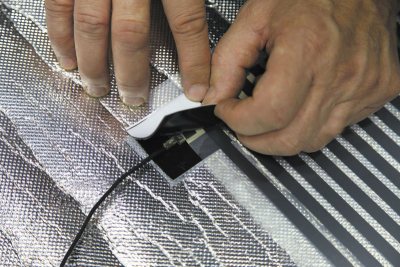

The heat-reflecting layer maximizes the efficiency of the IR film by storing and directing heat in the desired direction.
We have managed to calculate quite real figures for the consumption of electricity for the operation of film warm floors. The costs are not that terrible, but it takes a little work to achieve compliance. First, you need to properly lay the IR film, placing a heat-reflecting layer under it. Thanks to this, the heat generated by it will not go into the concrete screed or other underground structures.
It is also necessary to reduce heat losses, this will be somewhat more difficult. First, you need to work on the walls of the dwelling, since here the losses can be up to 15-20%. This figure is reduced due to the installation of thermal insulation and an additional layer of brick. It is best if all this is taken into account even at the stage of building the home ownership, otherwise you will incur additional costs.
The insulation of the ceiling will help to reduce the energy consumption of the film warm floor, from where another 10-15% of thermal energy can be lost. Ceiling structures should be insulated with basalt wool or any other similar insulation, and in two layers. This insulation will help reduce energy costs and prevent heat from leaking outside the home.
To reduce heat losses and a corresponding decrease in energy consumption for the operation of the film floor, you should work on other elements:
- Doors - you need to either install normal entrance doors in the house or endure the cost of electric heating;
- Floors are another place through which heat energy can flow. This leakage is prevented with additional concrete screed, as well as with serious thermal insulation materials. In wooden buildings, only thermal insulation is used, on top of which the boards of the subfloor are laid - then the film is spread, a topcoat is placed on top of it;
- A large area of window openings and extra windows - all this contributes to an increase in energy consumption for the operation of film warm floors. Excess windows should be laid, and too wide openings should be made narrower - the minimum ratio between the area of the windows and the area of the floor is the cause of losses.
All these measures will help prevent thermal energy leaks and reduce energy consumption.
Calculation of energy consumption of a film infrared warm floor
It is quite simple to calculate the energy costs for the operation of an infrared heated floor. True, here one should take into account the future operating mode of the floor heating system: round-the-clock or forced. In the first case, the costs will be higher, but only 1 out of every 5 homeowners who have installed an infrared heated floor uses this mode. The fact is that most of us spend most of the day at work, children at school, so it is not at all necessary to maintain a comfortable temperature in an empty apartment.
reference
The only thing that should be said in more detail is the energy consumption coefficient of 0.35, which is provided by the thermostat for the warm floor. Some consumers will ask themselves: why is this figure indicated? The fact is that the principle of operation of the thermostat is as follows - a film infrared warm floor is heated to a predetermined temperature from 10 seconds to 1 minute. After that, the thermostat automatically cuts off the power and natural cooling of the thermal film occurs. This process takes from 2 to 10 minutes (depending on the degree of thermal insulation of the house and, again, the set temperature). It is clear that at this time the film floor does not consume energy at all. When the temperature sensor is triggered, the thermostat turns on the floor again, and it heats up again from 10 to 60 seconds. Then again shutdown, etc. As you can see, the coefficient 0.35 is an average indicator of real energy consumption.
In the article, we will answer the most popular question on infrared heated floors: how much does a warm floor consume?
Let's consider what the consumption depends on and how to save energy when using a heating system for film warm floors.
Content
Alternative heating in the form of an electric underfloor heating: electricity consumption
There are many other types of heating systems:
- Solid fuel boilers:
- Carbonic;
- Wood-burning;
- On briquettes;
- Diesel boiler;
- Electric boiler;
- Electric radiators.
As an alternative heating for the above options, the film underfloor heating has positive reviews and low energy consumption, since it acts as insurance and maintains the optimum temperature directly for the floor covering. In this case, a sample with a lower power of 110-160 W is used. The number of working hours per day is significantly reduced and the final amount from a frightening one turns into a symbolic one. Combined with the unique feeling of a warm floor under your feet, it will be clear that the money spent has justified itself.


Electricity consumption graph
What is the power of the underfloor heating for 1 m 2 suitable for different types of coverage?
The only factor is the thermal conductivity of the floor covering. In the case of using linoleum, carpets, PVC tiles, the minimum power will be sufficient. For wooden floors, the power should be increased, depending on the thickness of the material.
The use of infrared underfloor heating in the apartment
By analogy with a private house, an electric underfloor heating in an apartment building consumes an insignificant amount of electricity, as it is in addition to central heating.


Installation of underfloor heating in the apartment
There are cases when central heating does not cope and it is more rational to lay a film floor instead of reconstructing an old branch of water heating.


A large room is equipped with an additional heat source
Related article:
Calculation of heat underfloor heating. In the article, we will consider the nuances of calculating a warm floor without errors. After all, this is the basis for the full functioning of the system over a long service life.
Calculation of the cost of consumption of underfloor heating
Let's calculate the cost of consumption of a film heated floor with a capacity of 220 W / m2, used as the main heating. The thermal film is laid on a free area not occupied by cabinet furniture. The room was built and insulated in accordance with the requirements of SNiP. The calculated air temperature in the room is + 22 ... + 24 ° С.
Initial data
- Film power underfloor heating: 220 W / sq. M.
- Electricity cost: 3.37 rubles / kW
To calculate energy consumption, we will use the formula:
Energy consumption = (underfloor heating power) * (heating area) * (heating time) / 1000
Consider two options for using a film warm floor and calculate the cost of electricity consumption for underfloor heating for each.
Heating a country house. Calculation of power and amount of underfloor heating


Many owners of a country house are interested in the possibility of heating using an infrared heated floor. We will describe the installation method and the calculation of energy consumption and the amount of underfloor heating required for heating at different outdoor temperatures. The infrared floor is suitable for heating laminates, parquet boards, not very thick floorboards (about 2 cm). When laying under soft floor coverings, it is advisable to cover the heating film with a sheet of thin plywood or hardboard to protect it. The plywood will also heat up and give its warmth to the soft finish. Linoleum must necessarily be without a thick layer of pile on the underside, which interferes with normal heat dissipation.
Restriction on the use of a heating film: - it is undesirable to use it under a tile (due to the complexity of installation and low efficiency of such a design - a sheet of gypsum fiber board is placed on the infrared film and attached to the pou, then tile glue is applied to it and tiles are laid - it is much easier and more efficient to use a heating cable-based mat.). Cannot be used in bathrooms, showers - where there is high humidity and the possibility of spilling water on the floor.
Infrared underfloor heating is the most efficient and economical way of heating, its efficiency reaches 98% (of course, if you do not have gas - main gas is beyond competition, but even if you have gas heating, underfloor heating can be made for additional comfortable heating.) Infrared rays heat the surface of the floor and, passing through it, heat objects in the room, including the human body. An ideal temperature distribution is created when heat rises evenly from the entire floor surface. The floor covering is heated to a low temperature and therefore the air does not dry out and oxygen does not burn out. Many buyers take a small amount of underfloor heating in our store for testing, and then, after making sure of its effectiveness, they order it for the whole house and we get a lot of warm reviews about such a heating system. I personally use it in the country and I can confidently confirm that this is a really excellent and inexpensive heating system.


If you plan to use a warm floor as the main heating, then the area of the heating film should be more than 60 - 70% of the total area of the room; it is necessary to provide indents from the walls of 5 centimeters or more. It is laid on a wooden floor, on which a heat-reflecting substrate has been previously laid. The wooden base on which the heating system will be mounted must be clean, even, the floorboards are securely fixed - they must not "walk". The infrared film is placed on a surface that is not occupied by furniture - there is massive furniture, a refrigerator, which will interfere with heat dissipation. Furniture on legs (table, chair, wardrobe) can be safely placed on a warm floor Calculation of the required power and the amount of warm floor. - in order to start calculating the required power and the amount of underfloor heating, you first need to determine the heat loss of your home. To do this, you can use this heat loss calculator. In this program, clearly, very simply, by entering data about your house (area, thickness and material of walls, floor and ceiling insulation), you will receive information about your heat loss. This program is made in accordance with the norms of SNiP 2003 “Thermal protection of buildings”. Of course, this calculator gives averaged information, because a lot depends on the quality of construction and insulation, after all, workers can cheat, not report the insulation. According to statistics, in central Russia, a specific heating power of 100 - 130 watts per square meter is needed.For example, we calculate the heat loss of a house 6 x 8 meters from a bar of 15 x 15 cm. the door.Substituting the necessary data into the calculator, we find that at an outside air temperature of -25 degrees and an internal temperature of + 18 degrees, the heat loss will be 127 watts per meter, and the total heat loss Ppot will be 6092 watts (we look at this data in the left column).
It is necessary to determine the installed power Rust - the required power of the underfloor heating. Rust = 1.3 x Ppot = 6092 x 1.3 = 7920. The amount of required underfloor heating is calculated according to the formula Sn = Rust / Rud = 7920/220 = 36 meters (where Rud is the specific power of the heated floor, 220 watts / sq. M.) With a total area of 48 sq. M. required floor heating area 36 sq. m. will account for 75% of the total area (this is in theory, practice shows that a little less is possible). And this is at a temperature of -25 degrees and there are no other sources of heat, and they will be anyway - for example, a stove in the kitchen.
An example of calculation if the temperature is - 15 degrees. Having inserted -15 degrees into the calculator, we get: Ppot = 4240 Zust = 4240 x 1.3 = 5512 The required area of the heated floor Sp = 5212/220 = 25 That is, at an air temperature of -15 degrees, only 25 square meters will be enough for heating. warm floor, or 52% of the total area of the room. Using the above calculation method, you will be able to estimate the heat loss of your home and the ability to use a warm floor for heating.
Calculation of energy consumption Power consumption per hour will be: p = S (area, sq. M.) X 0.52 x 0.33 = 1812 watts / hour ..
where 0.52 - 52% of the total area, which, according to the calculation, needs to be covered with a warm floor, and 0.33 is the coefficient of work of a warm floor. The thermostat cyclically turns on / off the warm floor, the coefficient 0.33 means that 1/3 of the cycle is the floor heating on, and 2/3 is off. Thus, the actual energy consumption will average 33% of the floor heating capacity. 1.8 kilowatts x 3 = 5.4 rubles per hour (3 is the cost of a kilowatt of electricity) If the heating is turned on around the clock, then the consumption will be 5.4 x 24 = 129 rubles per day or 3800 rubles per month in winter at an outside temperature - 15 - -20 degrees. Agree that such low temperatures occur only for short periods, which means that the average actual consumption in winter will be less .. And if you reduce the heating temperature when there is no one at home, then the consumption will be even less
Warm floor is always on
In this case, the consumption of a film warm floor will be 0.22 kW / h. Estimated 24-hour energy consumption for 30 days will be 158.4 kW / sq. M. (533.8 rubles / sq. M.)
But this is only if the heat continuously escapes through an open window or a film warm floor is connected without a thermostat.
Attention!
Connect a film underfloor heating without a thermostat as a comfortable or main heating not safe... Uncontrolled heating of the film can damage both the film itself and the floor covering.
Calculation of energy consumption in one room
For an average room area of 14 m2, heating 70% of the surface is sufficient, which is 10 m2. The average power of the warm floor is 150 W / m2. Then the energy consumption for the entire floor will be 150 ∙ 10 = 1500 W. With an optimal daily energy consumption for 6 hours, the monthly energy consumption will be 6 ∙ 1.5 ∙ 30 = 270 kW ∙ hour. At a cost of a kilowatt-hour of 2.5 rubles. costs will be 270 ∙ 2.5 = 675 rubles. This amount is spent with constant round-the-clock operation of the warm floor. When the thermostat is set to a programmable economy mode with a decrease in heating intensity in the absence of owners in the house, energy consumption can be reduced by 30-40%.
You can check your calculation using an online calculator.


The calculation of the power of the warm floor is done with a small margin. In addition, it depends on the type of room. The real average annual calculation will be less, since the heating is turned off during warm months (late spring, summer and early autumn).
You can check the real energy consumption using the meter when the other electrical appliances are turned off.
It is more difficult to calculate the power of water-heated floors. It is better to use the Audytor CO online calculator here.


The principle of operation of the thermostat for a warm floor
The principle of operation of the thermostat is simple - after the sensor has recorded the required thermal indicators, the thermostat stops the power supply until the temperature of the heating element drops by 1-2 degrees (this value can be changed in the thermostat settings). Then the power supply resumes.
The graph * clearly demonstrates the principle of operation of the underfloor heating system with a connected thermostat.
How To Reduce Electricity Costs When Using Film
Power selection
For comfortable floor heating in city apartments, a film with a capacity of 150 W / m2 is sufficient. Film underfloor heating is installed in places where heating is required.
For the main heating and comfortable floor heating, film warm floors with a power of 220 W / m2 are used, for example, Marpe Normal GSM thermal film. In this case, the recommendations of manufacturers for the installation of heating systems on the ground floors, in country houses and balconies with the use of continuous carbon films (for example, Marpe Black Heat), which have additional layers of moisture protection, should be followed. The coverage area is about 70% of the total area of the room.
Warming the room
When using infrared underfloor heating as the main heating in a country house, the ventilation of the room will be of great importance. If all of the generated heat escapes through the slots, the film will work longer to maintain the required temperature and, accordingly, the amount of electricity is consumed much higher.
To save energy, it is necessary to use heaters to reduce heat loss. Double and triple glazed windows and tightly fitted doors avoid large amounts of heat loss.
Choice of flooring
It should be borne in mind that different types of flooring have their own thermal conductivity.
Using an insulating layer
When installing infrared underfloor heating both in suburban and apartment buildings, it is recommended to use a heat-insulating substrate. It is made of chemically cross-linked rigid polyethylene foam with a closed porous structure several millimeters thick and an unmetallized reflective layer. Such a substrate not only protects the film from condensation and short circuits, but also allows all the heat to be directed into the room, excluding the heating of the interfloor overlap, while saving up to 40% of electricity compared to cable heating systems.
For full heating of the room, it is enough to cover about 70% of the floor area of the room. Installation of heating elements under furniture and household appliances is not only inexpedient in terms of energy consumption, but also undesirable due to the possibility of damage to the floor covering or overheating of the film.
Heating cable
Due to the low cost of the cable laid in the screed, many people prefer to use it. The thickness of the concrete is about 5 cm. As it increases, the heat loss increases. To make the screed thinner, use reinforcement or self-leveling floors.
The simplest and cheapest cable is resistive. It is available in single-core and two-core versions. The latter is more convenient to use, since the opposite end does not need to be wound back onto the thermostat. In this case, the opposite flow of electric current in adjacent conductors mutually compensates for the interference.
The power of the cable is small, but it can be increased up to 200 W / m2 with dense coils on each square meter.
Heat is generated evenly over the entire surface of the wire. If furniture or carpet is placed on top in a certain place, overheating may occur there due to deterioration of heat transfer. A self-regulating cable, in which the resistance depends on temperature, is devoid of this drawback.The current flows in the transverse direction through the electrically conductive layer from one conductor to another, passing in parallel with it.
However, laying underfloor heating under household appliances or furniture is an irrational solution. Heating the room depends on the power of the warm floor in it. If there are obstacles in the release of heat, it may not be enough.
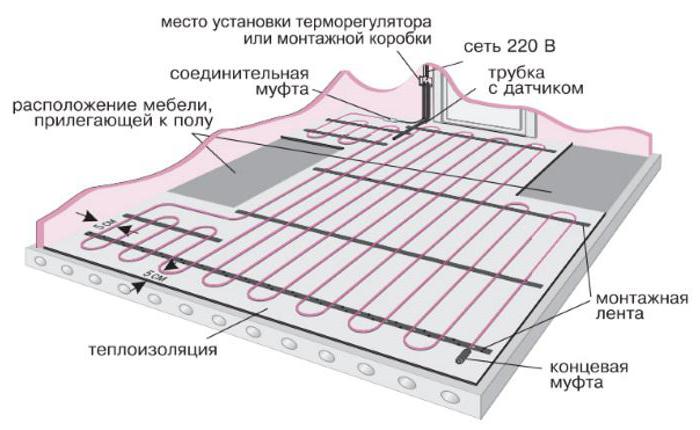

Underfloor heating is usually laid in places where furniture and household appliances are not supposed to be installed. As the main heating, it is effective if it occupies at least 70% of the area of the room. When the room is heavily overcrowded, it is advisable to use radiator heating. For additional heating, it is enough to use at least 30%. A comfortable mode is also used when it is important that the floor is not cold.


















